Fat Transfer in Dallas
Search and Compare the Best Clinics and Doctors at the Lowest Prices for Fat Transfer in Dallas
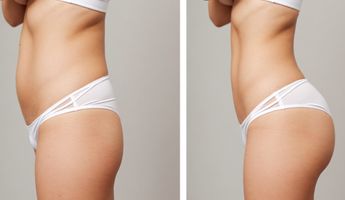
Find the best clinics for Fat Transfer in Dallas
With Medijump you can browse 2 facilities offering Fat Transfer procedures in Dallas. The cheapest price available is $500 in Los Angeles. And for the cheapest price globally, prices start from $167 in Thailand.
Fat Transfer in United States
Price: $ 500
Fat Transfer in Los Angeles
Price: $ 500
Thailand offers the best prices Worldwide
Price: $ 167
Maxim hair Restoration, located in North Dallas, Dallas, United States offers patients Fat Transfer procedures among its total of 24 available procedures, across 3 different specialties. Currently, there's no pricing information for Fat Transfer procedures at Maxim hair Restoration, as all prices are available on request only, whilst the national average price is approximately $500. There is currently a lack of information available on the specialists practicing at the Clinic, and they are not accredited by any recognized accreditations institutes
North Texas Plastic Surgery, located in Vickery Meadow, Dallas, United States offers patients Fat Transfer procedures among its total of 29 available procedures, across 1 different specialties. Currently, there's no pricing information for Fat Transfer procedures at North Texas Plastic Surgery, as all prices are available on request only, whilst the national average price is approximately $500. All procedures and treatments are undertaken by just a small team of specialists, with 2 in total at the Clinic, and they are not accredited by any recognized accreditations institutes
- Home
- United States
- Dallas
Compare Before & After Photos of _procedure_photos.phpFat Transfer

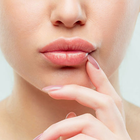
Front view
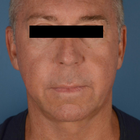
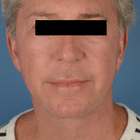
Front view
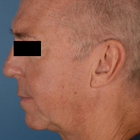
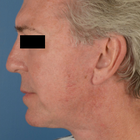
Full-side view
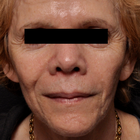
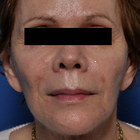
Front view
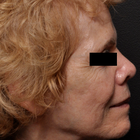
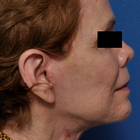
Full-side view
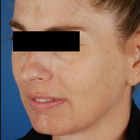

Half-side view
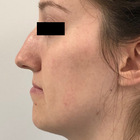
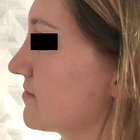
Full-side view
WHY US?
At Medijump, we're making medical easy. You can search, compare, discuss, and book your medical all in one place. We open the door to the best medical providers worldwide, saving you time and energy along the way, and it's all for FREE, no hidden fees, and no price markups guaranteed. So what are you waiting for?

Free

Best Price

Widest Selection

Risk-Free
What you need to know about Fat Transfer in Dallas
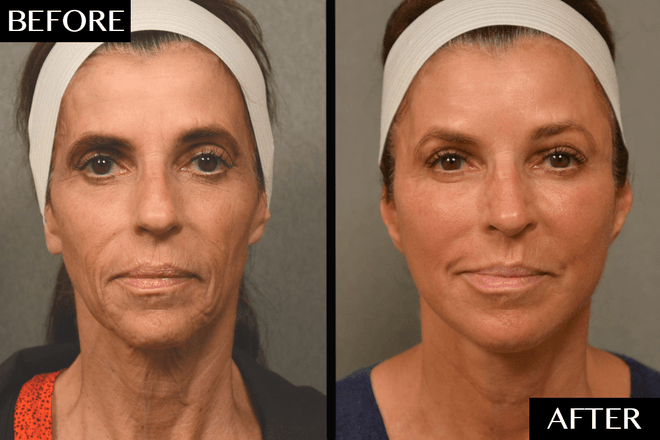
Also known as Fat Harvesting, Fat Grafting, Fat Injections, Lipofilling, Fat Transfer is a cosmetic surgery involving the movement of fat from one part of the body to another. During this procedure, your own fat will be used to fill in irregularities and grooves, primarily in the face, around the temples, eyes, chin, and lips. It can also be used to enhance the appearance of the breast, feet, hips, buttocks, and hands. The procedure is now a well-established technique that was perfected in the early nineties.
Some of the most common aesthetic indications for undergoing fat transfer / lipofilling include sunken cheeks, the disappearance of fat from the cheekbones, deep grooves running from the nose to the corners of the mouth, and in some instances of lines between the lower eyelids and the cheek. It is also one of the most common methods used for lip enhancement. In addition, lipofilling can be used to smooth out all types of irregularities such as those resulting from poorly performed liposuction or injuries.
The necessary fat is obtained by a limited liposculpture through one or several 3 to 5 mm incisions. It is normally taken from the abdomen or inner thigh. The aspirated fat is processed by centrifuging, filtering or rinsing. Pure liquid fatty tissue ready for injection is the result. The fat is then injected where needed. The fat is evenly distributed into the area by injecting minute amounts in the tissues so that the injected fat is well surrounded by healthy tissue. This ensures that the transplanted fat remains in contact with the surrounding tissues that must supply it with oxygen and nutrients.
What is the cost of Fat Transfer in Dallas?
Being aware of the costs linked to the Fat Transfer pricing in Dallas is vital for efficient budgeting and organizing. Pricing can differ greatly conditional to numerous things, such as the intricacies of the operation, the quantity of fat transferred, the surgeon's skill level, and the clinic's place. Conducting meticulous research and obtaining diverse quotations from multiple providers before settling is advisable.
Bear in mind, the Fat Transfer is generally deemed a vanity procedure, thus, it is not typically insured by health insurance providers. Exceptions may exist if the operation holds a medical necessity, like reconstruction operations post-mastectomy or injury. It's always advantageous to liaise with your insurance provider to grasp the specific details of your coverage and to ascertain the possible out-of-pocket expenses you could face.
What does a Fat Transfer Procedure Involve?
Consisting of two completely different procedures, extraction of fat called liposuction and transfer of fat through injections. Both the donor and recipient sites are sedated by giving local anesthesia. After this, fat is harvested through injections from the sites where adipocytes are tightly packed, such as the buttocks or abdomen. However, the fat present in lateral sides of the thighs and lower abdomen is also good fat as it contains a larger concentration of adipose-derived stem cells. These stem cells promote angiogenesis and adipogenesis at the recipient site - multiple injections are used to do this.
The material extracted is centrifuged, sedimented and filtered for excessive liquid and pure fat cells are injected just below the skin. This is the most difficult step of fat transfer to inject fat evenly in different layers of recipient tissue. Cannulas and syringes of different sizes are used to do this. In the case of breast augmentation, multiple fat injections are applied to the breasts. It is ensured that these fat cells are injected near a blood vessel so the cells don't die due to a lack of nutrition. Proper nutrition is needed for the cells to survive and grow.
What are the types of Fat Transfer?
Facial fat transfer: If you have facial creases, such as laugh lines, smile lines, and crow’s-feet, fat can be removed from your abdomen, thighs, or other areas and be injected into your face. Acne scars and sunken areas of the face, lips, and cheeks can also be filled in. Your plastic surgeon can even use grafted fat to minimize lines between your nose and mouth, correct skin depressions or indentations and minimize forehead wrinkles. (Facelift, Lip Augmentation)
Breast augmentation: Fat transfer breast augmentation essentially uses liposuction to take fat from other parts of your body and inject it into your breasts. This is a breast augmentation option for women who are looking for a relatively small increase in breast size and would prefer natural results.
Breast implants plus fat grafting: If your breast shape needs optimizing during a breast implant procedure, fat grafting can be useful. If you have residual breast irregularities after undergoing breast augmentation with implants, the irregularities can be filled in with fat to produce a smooth contour and an optimal shape.
Breast reconstruction with fat grafting: If you have breast defects following lumpectomy for breast cancer, fat grafting is an effective method for filling in these defects. Fat grafting is also an option for total breast reconstruction following mastectomy; however, to achieve sufficient breast volume, this is usually a multistage process that requires at least two to four sequential fat grafting procedures.
Buttock augmentation with fat grafting: Many people who desire a fuller, more rounded buttock will opt for a “Brazilian butt lift” which uses fat transfer to provide a more curvaceous buttock without the use of an implant. Liposuction is commonly used to both sculpt the surrounding area and collect the autologous fat to be injected.
Hand rejuvenation with fat grafting: Fat grafting into your hands is effective for adding volume, “plumping up” wrinkled areas, covering underlying vessels and tendons and improving the quality of your skin over time.
How Long Should I Stay in Dallas for a Fat Transfer Procedure?
As an outpatient procedure, just a couple of hours are needed depending upon the amount of fat that is to be removed and transferred. You can leave the hospital on the same day or sometimes an overnight stay is advised, and in some cases, more than one session is needed. You should stay in Dallas for at least 10-14 days after being discharged for regular check-ups. During this period, your health and results of the procedure are monitored by your surgeon.
The precise duration of your visit will primarily hinge on your personal situation, including the scope of your surgery, your total health condition, and your body's healing capability. It is always wise to engage in open dialogue with your surgeon about the anticipated period of your stay.
What's the Recovery Time for Fat Transfer Procedures in Dallas?
The recovery period is different for different areas of your body. After a buttock augmentation, you have to sleep on your stomach or keep standing for at least 4 weeks. Because sitting can dissipate the fat. The shape of the augmented area might appear irregular initially, it will get a proper contour after some time. There will be moderate swelling and bruising at both the donor and the recipient sites for 2 weeks. Your face might appear fat and plump after fat grafting but it will settle down before long. You might suffer from moderate pain for a few days. Pain killers are given to deal with this. Almost 6 months are required for the results to fully show.
What sort of Aftercare is Required for Fat Transfer Procedures in Dallas?
Things to consider:
- Regular checkups after being discharged.
- Take your medicines regularly, as and when prescribed by the doctor. Avoid self-medication.
- Follow a healthy diet plan for a better recovery.
- Ensure the presence of a friend or family member with you in the early few days to help you with house chores.
- Avoid excessive movement during the early few weeks and do not sit on your butts in case of butt fat transfer because it can dissipate the fat rendering it ineffective.
- Look for the signs of blood clot formation, excessive bruising, etc. Visit your doctor immediately if you find any abnormal thing.
What's the Success Rate of Fat Transfer Procedures in Dallas?
When exploring any health-related process, the success ratio becomes a key element to consider. The efficiency of the Fat Transfer in Dallas hinges upon various aspects such as proficiency and expertise of the surgeon, the health condition of the individual, and compliance to the guidelines of care after the operation. Fat transfer has been gaining fame due to its dual advantage of eliminating unnecessary fat from the body and accentuating preferred areas.
The outcomes of Fat Transfer show promising persistency. Many people have enjoyed pleasing results that lasted for a long span of time. Fat transfer for breast augmentation has increased by 76% in 2016 while for butt augmentation, a 26% increase has been witnessed. This approach also enjoys a commendable success ratio when it comes to patient satisfaction, with some researches revealing satisfaction percentages reaching up to 85%. It's however crucial to hold realistic anticipations, since factors like age, weight changes, and general health can sway the results. Regular consultations with your health provider are crucial for monitoring improvements and promptly dealing with any arising issues.
Are there Alternatives to Fat Transfer Procedures in Dallas?
Fat grafting is an expensive technique as it consists of 2 different procedures. Following are some alternatives to it:
- Dermal fillers: these are given through injections to make your skin look plump. Sunken cheeks can be effectively corrected through this technique.
- Breast implants: for small breasts, implants are an alternative to fat grafting. A silicone implant is inserted into your breasts to increase their size.
- Breast reconstruction: cancer patients, who went through mastectomy can get their bust back by reconstructive surgery.
- Tummy tuck: This procedure tightens your abdominal muscles giving them a tighter and flattened appearance.
- Liposuction: excessive fat is removed from different parts of your body through liposuction. Your tummy looks flatter and you look smarter after this procedure.
- Cheek augmentation: in this technique, silicone implants are inserted into your cheeks to make them look bigger and plump.
All of the techniques mentioned above involve only one procedure.
What Should You Expect Before and After the Procedure
Understanding the process before and after undergoing the Fat Transfer is crucial to easing worries and ensuring a successful outcome. Before the process, your doctor will provide in-depth guidance on the requisite preparations. This might involve abstaining from certain drugs or supplements that may increase bleeding, and possibly, fasting if general anesthesia is planned. Thorough medical check-up and health evaluation will be performed to lower any prospective risks. In particular instances, your doctor may advocate lifestyle alterations such as quitting smoking because it can hinder the recovery process.
Following the Fat Transfer, patients might have minor swelling and bruising, but these usually recede in a few weeks. Aches and discomfort can be effectively controlled with prescribed medicine. Though recovery time varies among individuals, most return to work and resume everyday activities within one to two weeks. Your doctor will provide detailed instructions for a post-procedure care routine, possibly involving wearing pressure garments and regular review meetings to track healing and progress.
What are Potential Risks of Fat Transfer?
Possible complications can include:
- Blood clot formation, infections, and ulmonary embolism leading to the failure of fat grafting
- Absorption of the transferred fat by the body leading to asymmetry or irregularities in the treated area
- The formation of oil cysts or calcification which can interfere with radiological imaging
Whilst the information presented here has been accurately sourced and verified by a medical professional for its accuracy, it is still advised to consult with your doctor before pursuing a medical treatment at one of the listed medical providers
No Time?
Tell us what you're looking for and we'll reachout to the top clinics all at once
Enquire Now

Popular Procedures in Dallas
Prices Start From $26

Prices Start From $113

Prices Start From $208

Prices Start From $275

Prices Start From $758

Prices Start From $5

Recommended Medical Centers in Dallas for Fat Transfer

- Interpreter services
- Translation service
- Religious facilities
- Medical records transfer
- Medical travel insurance
- Health insurance coordination
- TV in the room
- Safe in the room
- Phone in the room
- Private rooms for patients available

- Interpreter services
- Translation service
- Religious facilities
- Medical records transfer
- Medical travel insurance
- Health insurance coordination
- TV in the room
- Safe in the room
- Phone in the room
- Private rooms for patients available

- Interpreter services
- Translation service
- Religious facilities
- Medical records transfer
- Medical travel insurance
- Health insurance coordination
- TV in the room
- Safe in the room
- Phone in the room
- Private rooms for patients available

- Interpreter services
- Translation service
- Religious facilities
- Medical records transfer
- Medical travel insurance
- Health insurance coordination
- TV in the room
- Safe in the room
- Phone in the room
- Private rooms for patients available

- Interpreter services
- Translation service
- Religious facilities
- Medical records transfer
- Medical travel insurance
- Health insurance coordination
- TV in the room
- Safe in the room
- Phone in the room
- Private rooms for patients available

- Interpreter services
- Translation service
- Religious facilities
- Medical records transfer
- Medical travel insurance
- Health insurance coordination
- TV in the room
- Safe in the room
- Phone in the room
- Private rooms for patients available

- Interpreter services
- Translation service
- Religious facilities
- Medical records transfer
- Medical travel insurance
- Health insurance coordination
- TV in the room
- Safe in the room
- Phone in the room
- Private rooms for patients available

- Interpreter services
- Translation service
- Religious facilities
- Medical records transfer
- Medical travel insurance
- Health insurance coordination
- TV in the room
- Safe in the room
- Phone in the room
- Private rooms for patients available
Fat Transfer in and around Dallas
About Dallas
Dallas, or nicknamed as the Big D, is a metropolitan city located in North Texas. The city is known for its massive excellent museums, youthful vibe, edgy culture, and distinctive neighborhoods. Thanks to its charming attractions combined with world-class medical centers, the city is now a rising medical tourism destination. Additionally, the expansion of the medical district in Northwest Dallas has contributed to the city’s popularity as a medical destination. The district is home to numerous significant hospitals and institutions, such as UT Southwestern Medical Center and Parkland Memorial Hospital. More and more people, both from other cities in the United States or from other countries in the world, come to Dallas to get treatment with modern medical equipment, professional doctors, and world-class medical centers. Among the surgeries and treatments available, lung treatment is the most sought-after procedure.
Popular Areas in Dallas
- Dallas Arboretum & Botanical Garden is 66 acres of lush nature that showcases beautiful plants and flowers in themed areas. It has 19 gardens to explore, such as the Woman’s Garden, DeGolyer Gardens, Sunken Garden Crape Myrtle Alee, and Nancy’s Garden. Autumn at the Arboretum is Dallas’ Favorite Tradition during the fall that visitors should not miss. During spring, Pink Hyacinths with violas and daffodils bloom in the gardens, and the whole arboretum is packed with visitors and the nearby streets are closed.
- Nasher Sculpture Center is a museum that houses the Patsy and Raymond Nasher collection of modern and contemporary sculpture. Together, they accumulated one of the most comprehensive private collections in the world. Tourists can admire masterpieces such as works by Alexander Calder, Alberto Giacometti, Henri Matisse, Paul Gaugin, and Willem de Kooning, among others. Designed by architect Renzo Piano, the building itself is a work of art.
- Pioneer Plaza is the biggest open space in Dallas as well as one of the most visited tourist sites in the city. It is surrounded by super detailed sculptures of cattle, trees, and flowers that are native to the area. Tourists can find a small waterfall and creek in the area. There is also an early period cemetery from the 1800s where former Dallas mayors and Texas Revolution leaders are buried. It is truly the place that honors the tradition and culture of Texas.
- Sixth Floor Museum at Dealey Plaza is located in the former Texas School Book Depository, which is the very spot where Lee Harvey Oswald, according to government investigations, shot and killed President John F. Kennedy. The museum uses historic films, photographs, artifacts, and interpretive display to exhibit the social and political landscape of the early 1960s, the assassination of President Kennedy and its aftermath, as well as the legacy that he left behind.
Weather and Climate in Dallas
June to August is Summer in Dallas, and the temperatures can soar to over 30 °C. In addition to the heat, the high humidity levels will make the weather feel unbearable. However, it is the most popular time to visit the city. Autumn brings cooler and pleasant weather to the city. The temperatures can drop to 21 °C, and the city will be less crowded than the summer. Winter starts in December and ends in February. Average daytime highs are around 10 °C, but there are days with below-freezing temperatures. The city may also receive a few days of snowfall. From Mach to May is spring and the temperatures are rising to 21 °C, but there is a lot of rain during this season.
Getting Around in Dallas
The primary international airport is the Dallas/Fort Worth International Airport. It is the ninth busiest international gateway in the United States and operates flights to and from many cities around the world, including London, Dubai, and Tokyo. It is the largest hub for American Airlines, and several budget airlines serve flights from this airport, such as Spirit Airlines and Sun Country Airlines.
The city has a light rail system that connects the downtown with many other areas in the city. It is operated by Dallas Area Rapid Transit (DART) and features four lines (Red, Orange, Green, and Blue) servicing 64 stations. The trains run from 5.00 AM to midnight. There is also another train system known as the Trinity Railway Express (TRE) that connects Dallas and Fort Worth. The TRE trains from Fort Worth and Dallas operate from 5.00 AM to 11.00 PM from Monday to Friday. Dallas Area Rapid Transit also operates an extensive bus system that serves 11,000 stops throughout central Dallas and the Metroplex. Taxis are the easiest way to get around the city, especially for first-time visitors as they are relatively inexpensive with an initial charge of $5 and then $3 for each mile.
Tourists Visas in Dallas
Canada, Marshall Island, Micronesia, Palau, and Bermuda are given visa exemption access to enter the United States. Holders of passports issued by 38 countries, such as Australia, Singapore, and the United Kingdom, are selected for the Visa Waiver Program, which means they can enter without a visa. Other countries not listed in the visa exemption and visa waiver program need to apply and obtain a visa to enter the country. All visitors may stay for up to 90 days. It is advisable to check the visa policy at your nearest United States Embassy.
Additional Information
- Local Currency: The official currency is the US dollar ($). It is considered as a global currency used in many international transactions.
- Money & Payments: ATMs are easy to find, commonly at airports, banks, malls, gas stations, and convenience stores. Credit and debit cards are widely accepted and usually required for reservations. Since service employees make minimum wage, tipping is essential.
- Local Language: English is the most widely spoken language, and more than 29% of the residents speak Spanish.
- Local Culture and Religion: Around 55% of the population is religious. Christianity is the largest religion in Dallas, followed by Islam, Judaism, and eastern faith.
- Public Holidays: New Year’s Day, Texas Independence Day, Independence Day, Thanksgiving, and Christmas are some of the major public holidays in Dallas. The city hosts numerous annual festivals such as Scarborough Renaissance Festival and Texas State Fair.
Popular Searches
- Plastic Surgery in Thailand
- Dental Implants in Thailand
- Hair Transplant in Thailand
- Breast Augmentation Thailand
- Gastric Sleeve in Thailand
- Gender Reassignment Surgery in Thailand
- Laser Hair Removal in Bangkok
- Botox in Bangkok
- Dermatology in Bangkok
- Breast Augmentation in Bangkok
- Coolsculpting in Bangkok
- Veneers in Turkey
- Hair Transplant in Turkey
- Rhinoplasty in Turkey
- Stem Cell Therapy in Mexico
- Rhinoplasty in Mexico
- Liposuction in Mexico
- Coolsculpting in Tijuana
- Rhinoplasty in Korea
- Scar Removal in Korea
- Gastric Sleeve in Turkey
- Bone Marrow Transplant in India
- Invisalign in Malaysia
- Plastic Surgery in the Dominican Republic
- Tummy Tuck in the Dominican Republic
- Plastic and Cosmetic Surgery in Poland
- Rhinoplasty in Poland
- Hair Implant in Poland
- Dental Implants in Poland
- IVF in Turkey

